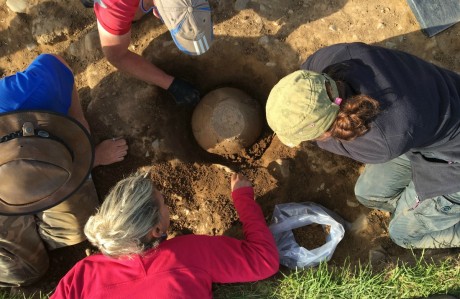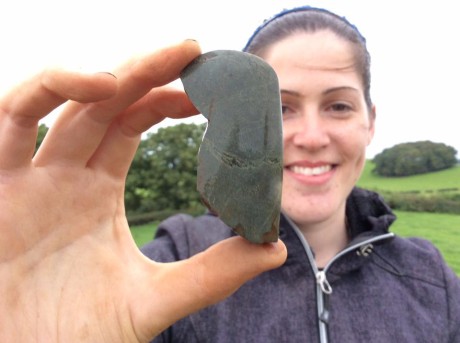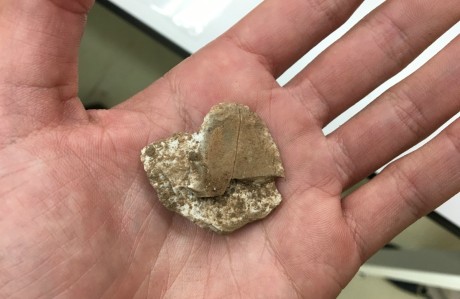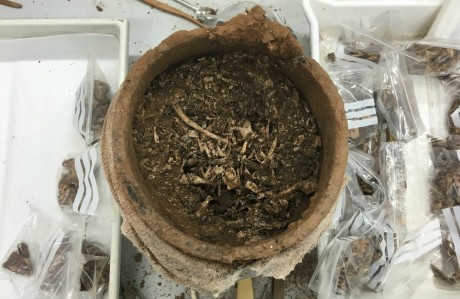
We’ve had to keep it quiet until now, but we’ve got some big news for you. This summer, we unearthed a rare Bronze Age funerary urn. We’re now ready to head to the lab to analyse the urn, and its contents, and we’ll be livestreaming the process for you to see. It’s going to be a delicate operation… Tune in on Monday from 11am to watch on Facebook, and Twitter!
It was a hot, dry day in July when Rita (one of our crowdfunders) uncovered the urn, buried upside down beneath three slabs of stone. With only the base of the urn visible at first, it was barely distinguishable from the surrounding soil. And yet the significance of what had been uncovered, and the evidence it would contain, was immediate.
Made of thick, coarse ceramic, the urn had clearly been made during the early Bronze Age between 4,200-3,600 years ago – a period in which people were being cremated and their ashes either scattered, or collected and buried in vessels like this one.
Unfortunately, we couldn’t announce the discovery immediately due to concerns about nighthawking – the site was (and still is) an active Treasure case, but over the next few days, the urn was excavated and lifted with painstaking care; it was large, it was decorated and it was completely intact. What’s more it had the potential to fill in some huge gaps in our knowledge.
These early Bronze Age urns were the first new ceramic tradition used in British burials after the arrival of the Beaker people, but some have been found to contain crushed up bits of other pots, which means they could conceal evidence of other, even older ceramic traditions.
Plus, archaeologists are still unsure whether these funerary urns were specially made for burials, or whether they might have been used during life for cooking or storing food.
Curiously, a human cremation produces ashes that weigh 2kg, but the total typically recovered from cremation burials rarely exceeds 300g. Theories abound, but it could have been that only a token amount were placed in the urn, with the rest were kept as mementos, or distributed among other family members, perhaps to cement bonds between groups. Were other items, like flowers, hazelnuts or garments, placed in there too?
This was the first major scientific excavation of a Bronze Age burial site in northwest England in over 50 years. Until now, this region has been something of a Bronze Age blankspot, but with the help of our crowdfunders, and of the responsible metal detectorists who discovered the site, an image of a richly inhabited landscape is starting to emerge.
There is so much that, with careful, scientific analysis, this urn can help us learn about the region. We hope you’ll join us on Monday as we begin the next stage of the journey, and to see how we recover the evidence.


